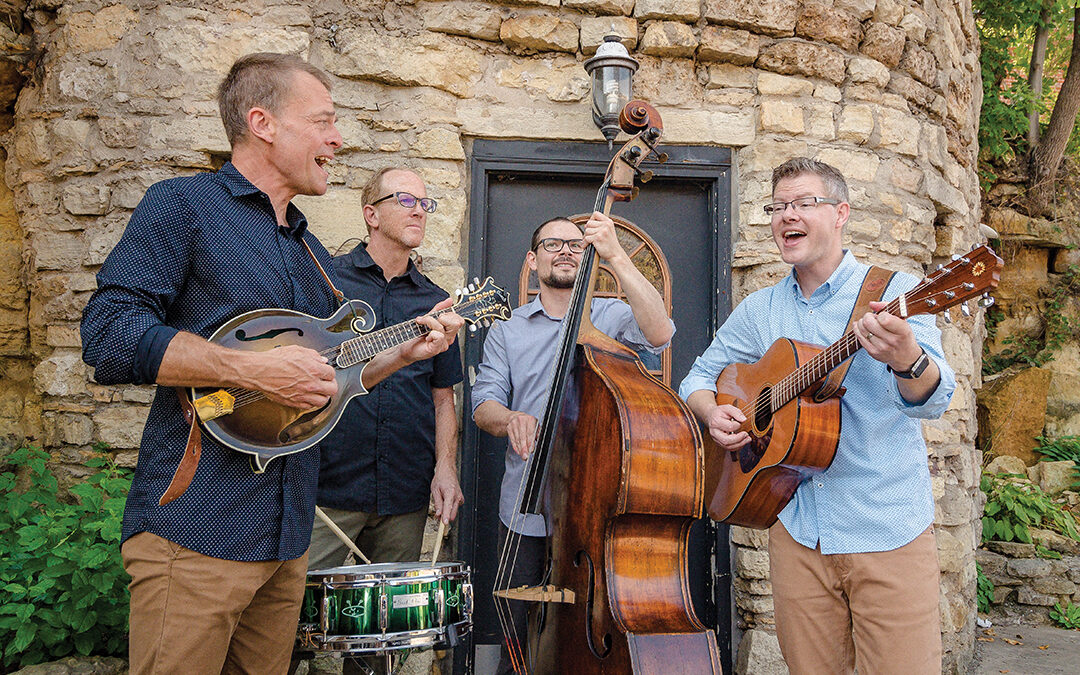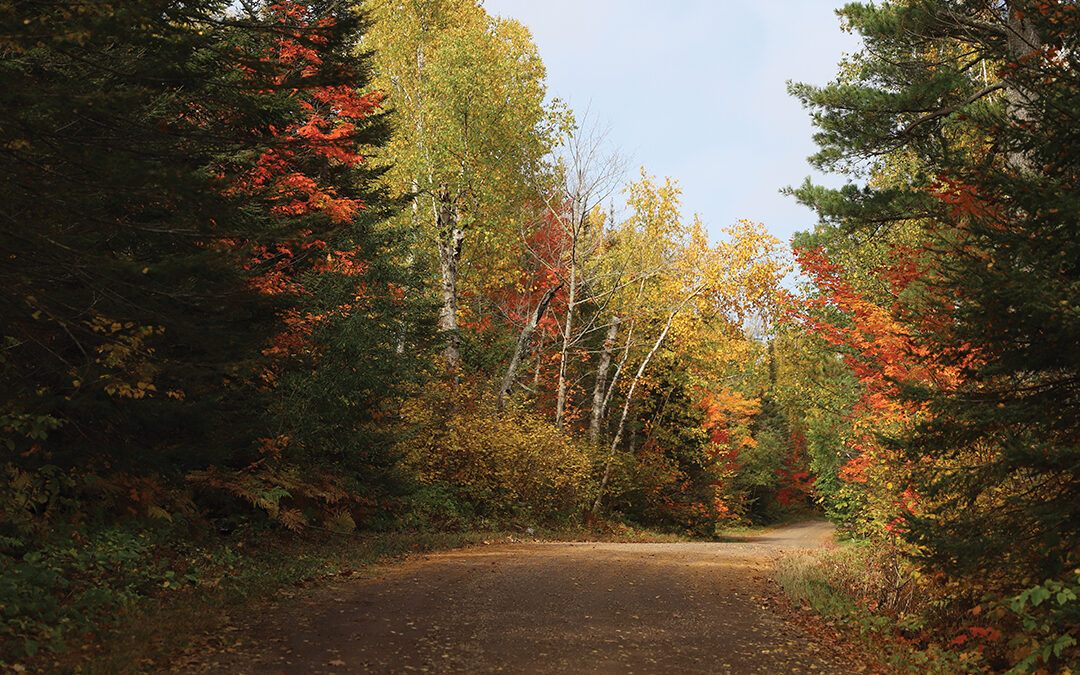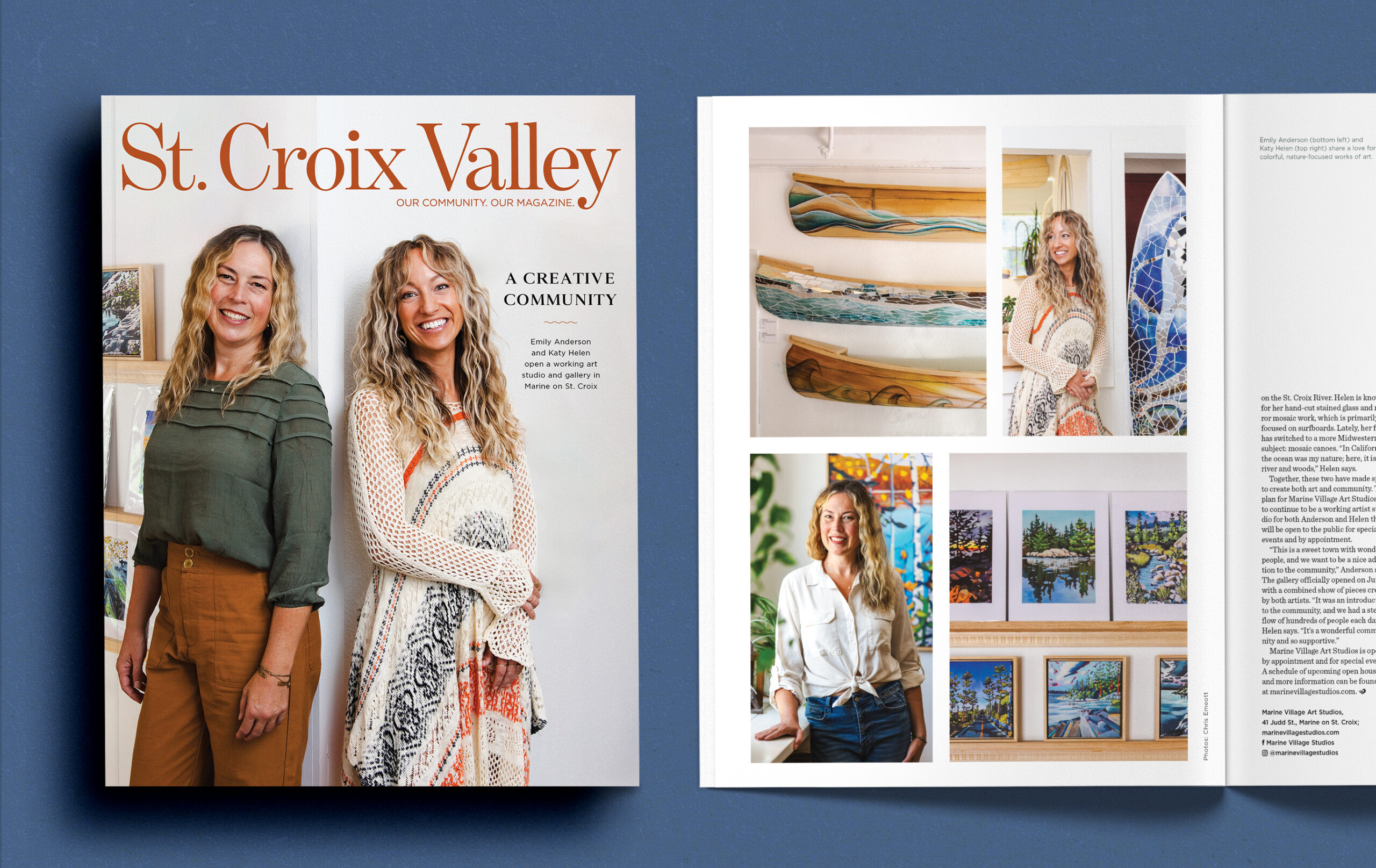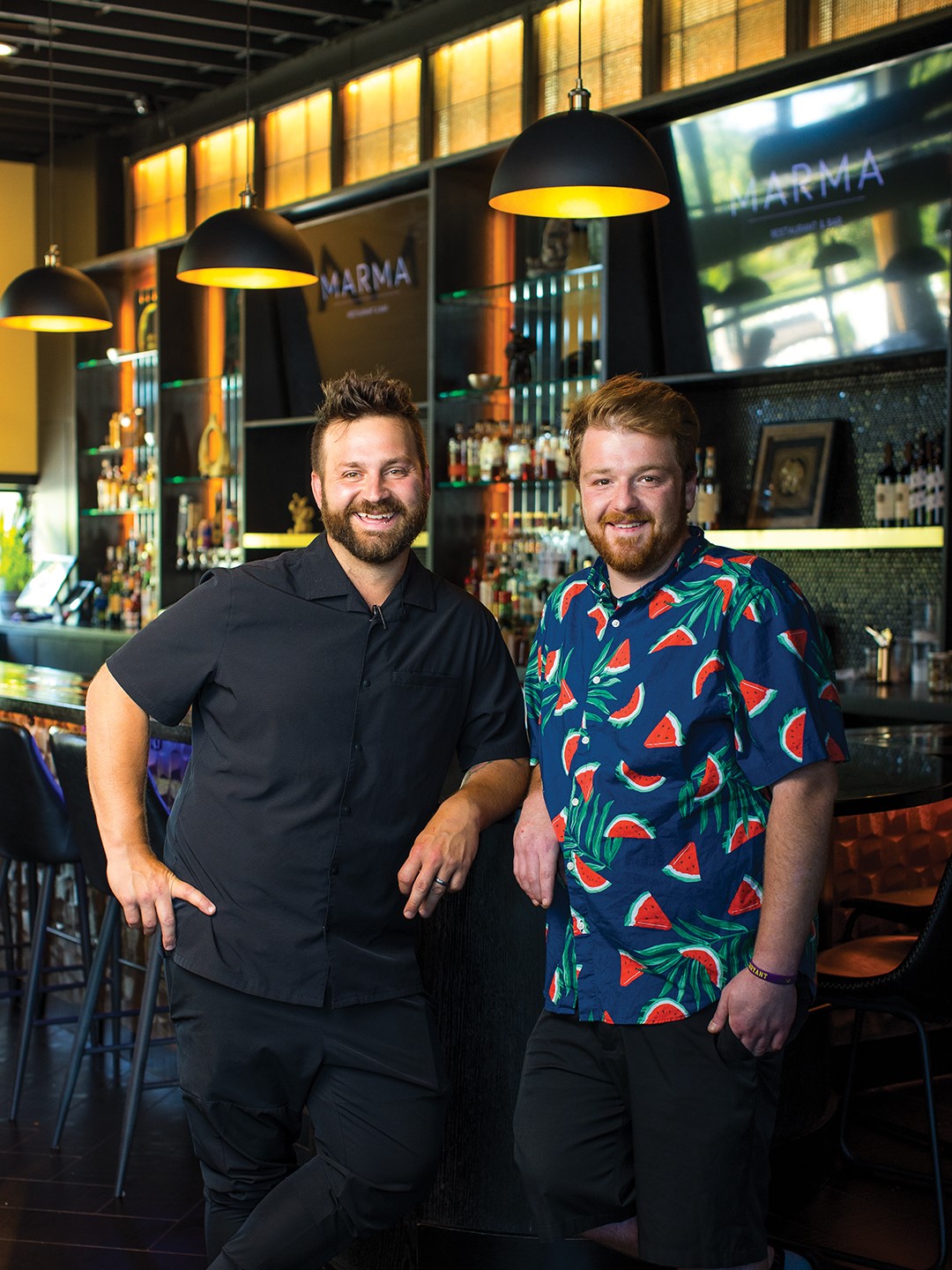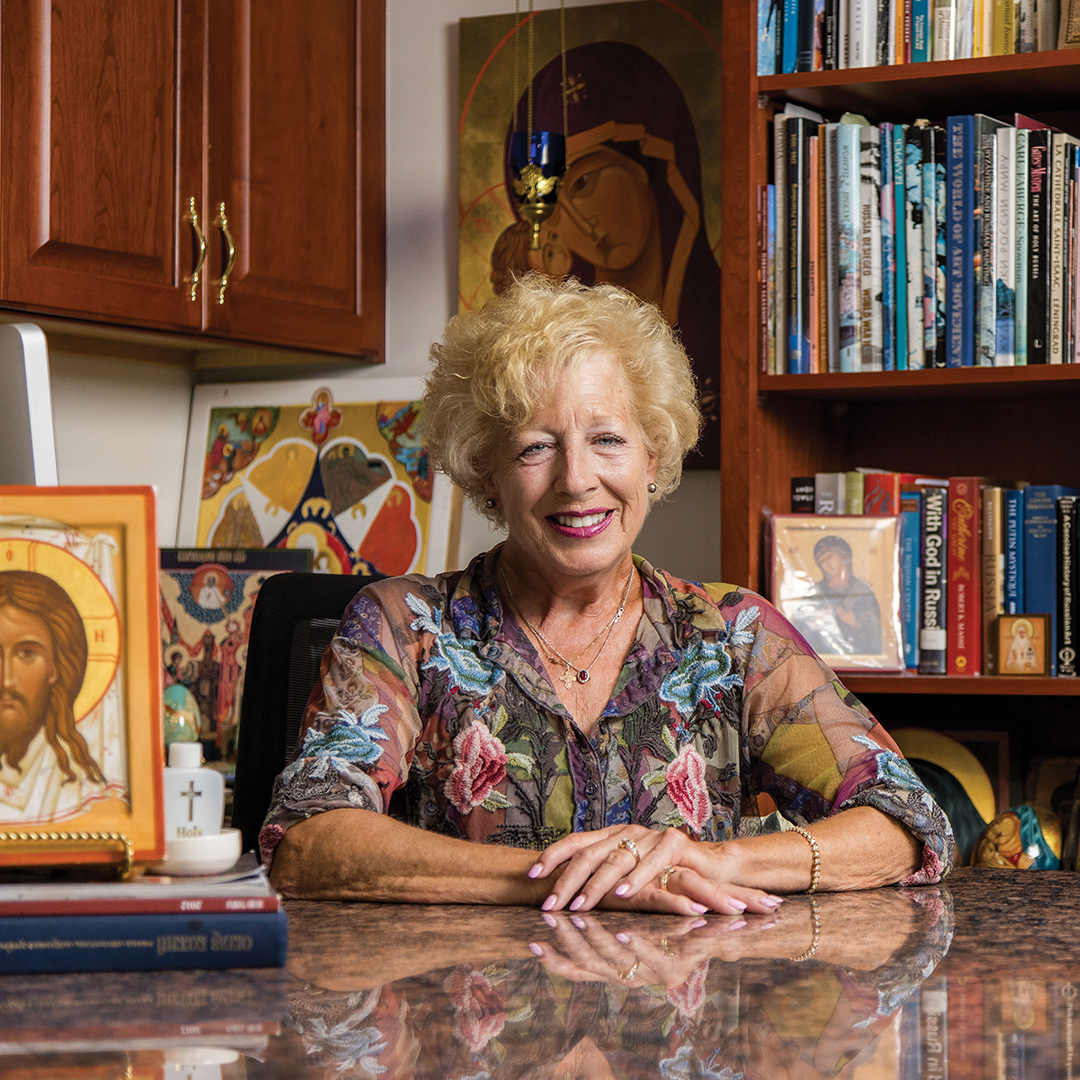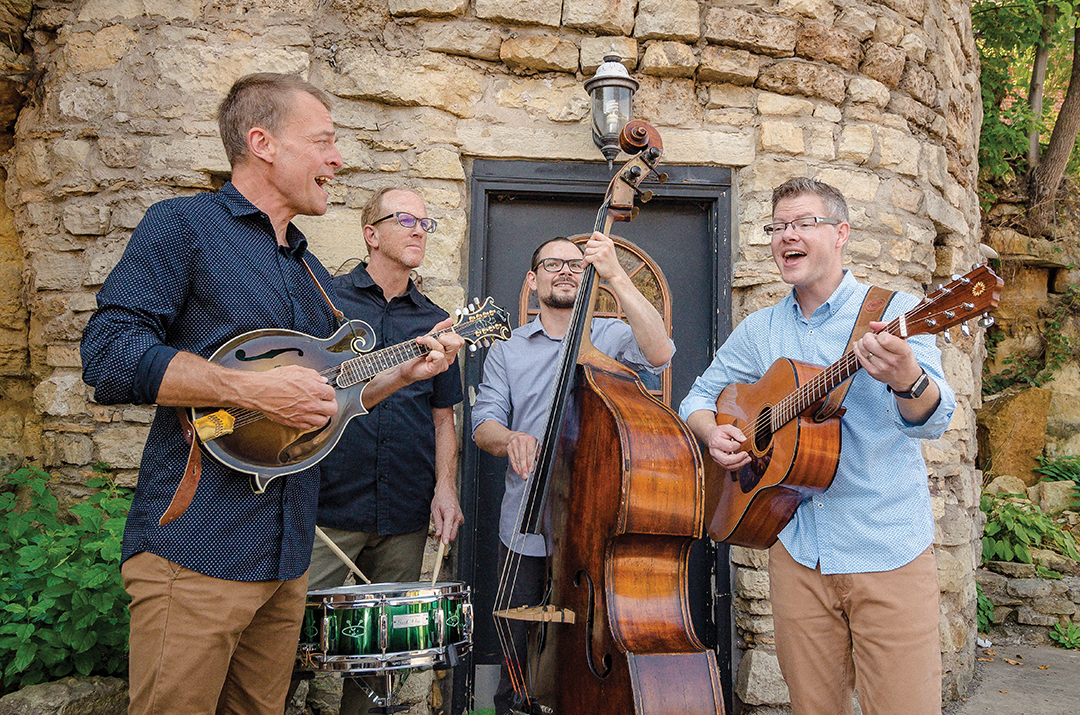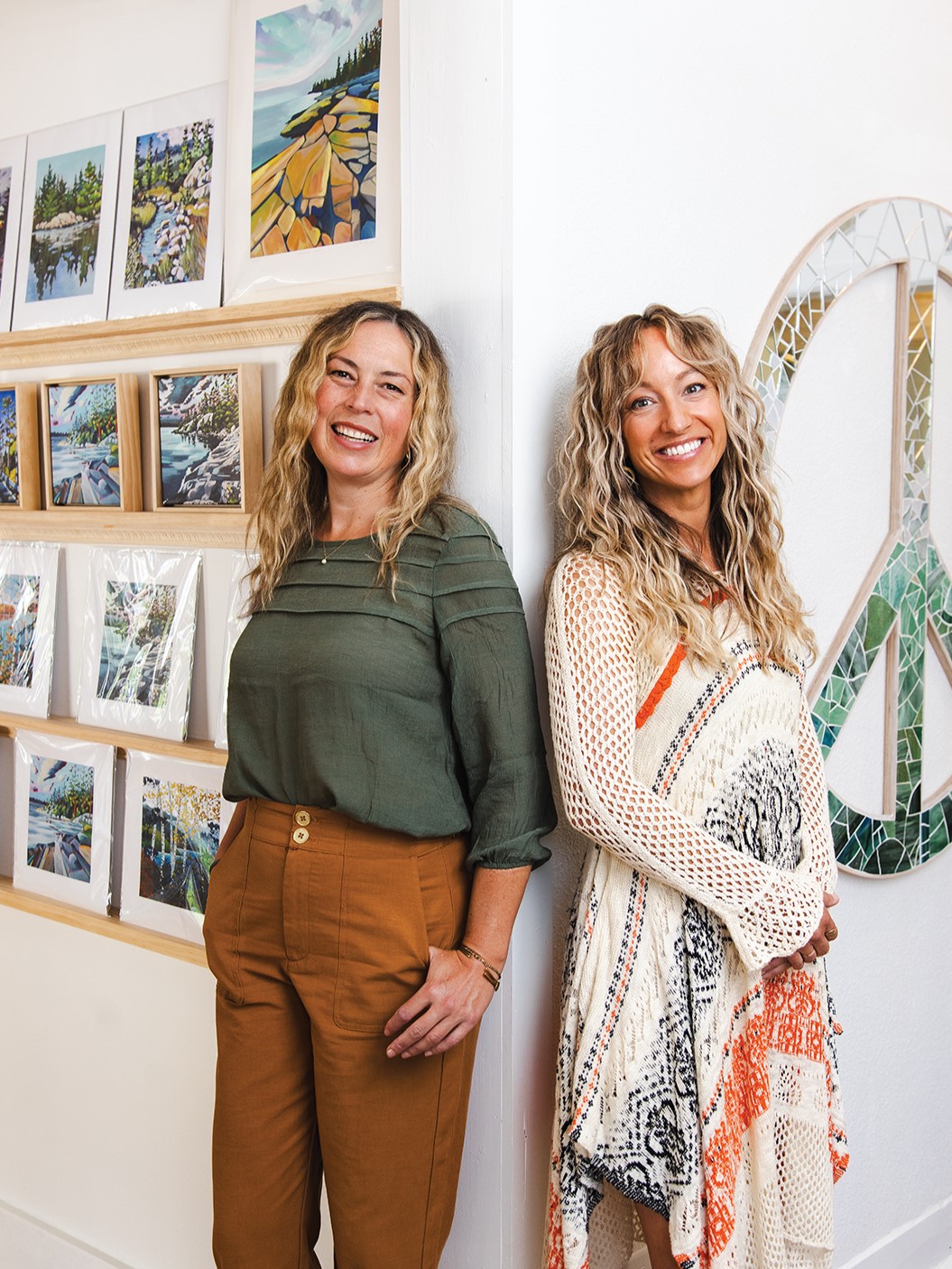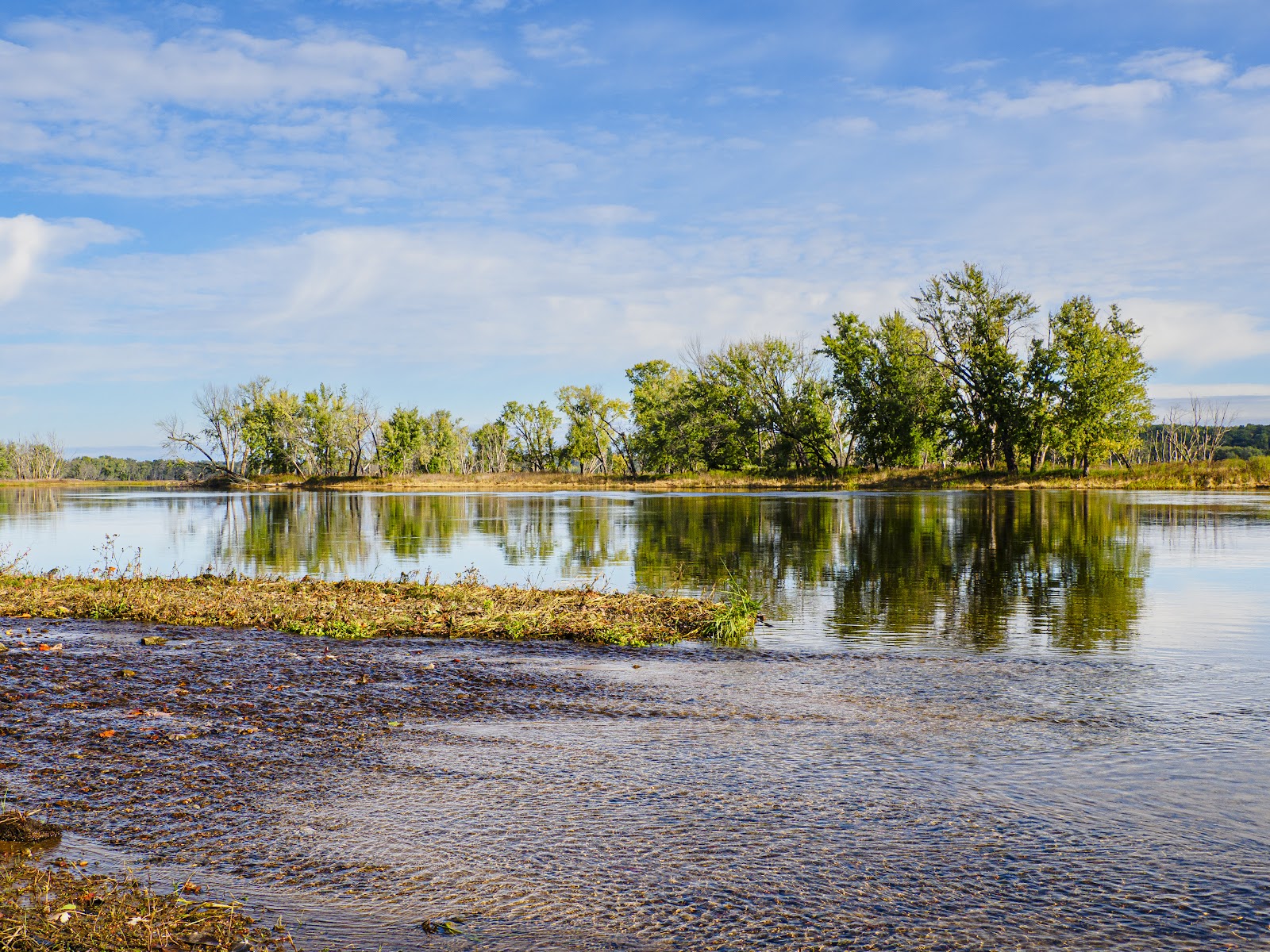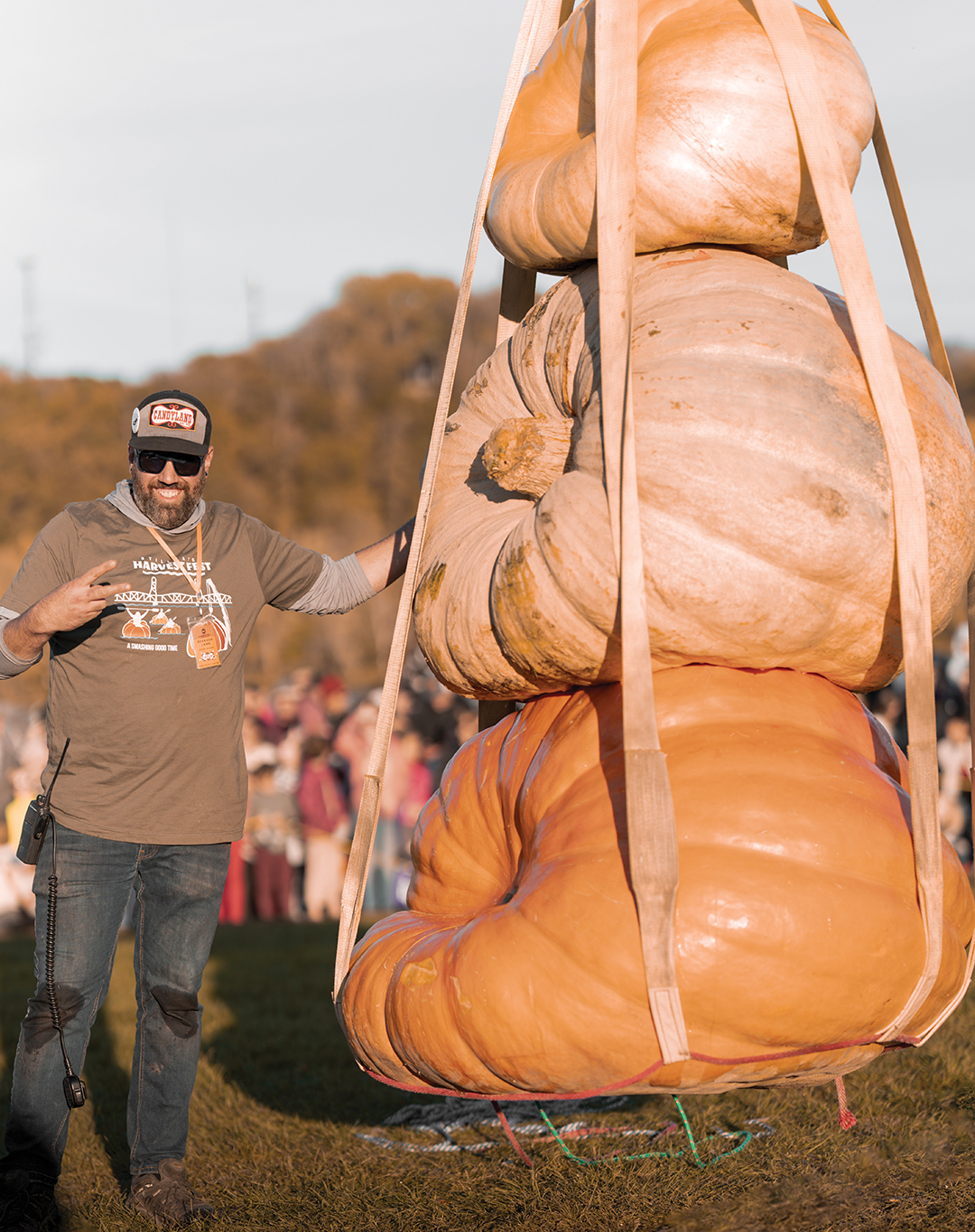
Roaming Stone by Chicago sculptor David Sprecher, currently on view at Tallgrass Trails at Belwin Conservancy in Afton. Photo: David Freeman
Belwin Conservancy’s newest art installation brings visitors closer to nature.
Sitting on 1,500 acres of land, the Belwin Conservancy welcomes individuals to learn and engage with nature. Partnering with a variety of local educational institutions and indigenous organizations, Belwin program director Susan Haugh says the team hopes to be a resource where “people can come relax, have fun and learn about the land.” This is made possible through education and restoration projects to rejuvenate, restore and maintain the land. “The more we respect the earth, the better off we are going to be,” Haugh says. “Without all of the bugs and birds and the mammals, there is no life … We depend on them, and they depend on us, so we need to be better about taking care of the land.”
A part of getting people interested in preservation is through art, says Haugh. That is why the Belwin partnered with 4Ground: Midwest Land Art Biennial, a three-month-long contemporary art festival that spans across four states and tribal lands in the upper Midwest. It works to raise awareness around the importance the ecosystem has in our daily lives while also celebrating art and history of the rural regions. “Art is such a beautiful way of enriching the experience of anything at a deeper, more emotional level,” Haugh says.
“I think about sculpture as anything and everything in the world. It feels like a very open-ended medium … So that is very liberating,” says David Sprecher, a Chicago sculptor, whose art is featured at the Belwin Conservancy as a part of the Biennial and will be permanently displayed. “I like making things that feel like they have a certain amount of autonomy in the sense that they are kind of like characters growing and changing in time and can respond to people differently.”

Roaming Stone sculpture in progress.
As the first long-term art installation on the Belwin land, Roaming Stone by Sprecher pays tribute to the bison that inhabit the land. Sitting amid the Tallgrass Trail, the feature comprises a collection of bison tracks and natural imprints formed from polyurethane foam molds. The molds were then wrapped around a large inflatable sphere and later cast out of concrete to seal the memory of the prairie. “I am very interested in the ability of the large stone to reiterate impressions if it rolled … Conceptually, it would restamp or reprint the time capsule of the prairie’s topsoil, top surface,” Sprecher says about the piece.
The significance of the bison runs deep, says Haugh. Bison are essential to the prairie land because they help aerate the soil which assists in dispersal of native seeds. “All of the things that they do nurtures the prairie, and the prairie nurtures them,” she says. “It is just a whole system that is incredibly beautiful because it is an example of how the earth takes care of itself.”
The Winter Solstice Bonfire
The Belwin Conservancy will host a Winter Solstice Bonfire on December 20 to celebrate the start of the new season and the lengthening of the day on December 21. In addition to the roaring flame, the event will also feature night hikes, storytelling, hot mulled cider and cookies.
“We wanted to celebrate the celestial happenings, and the solstice is, of course, a beautiful community event,” Haugh says.
Belwin Conservancy
1553 Stagecoach Trail S., Afton; 651.436.5189
Facebook: Belwin Conservancy
Instagram: @belwinconservancy

